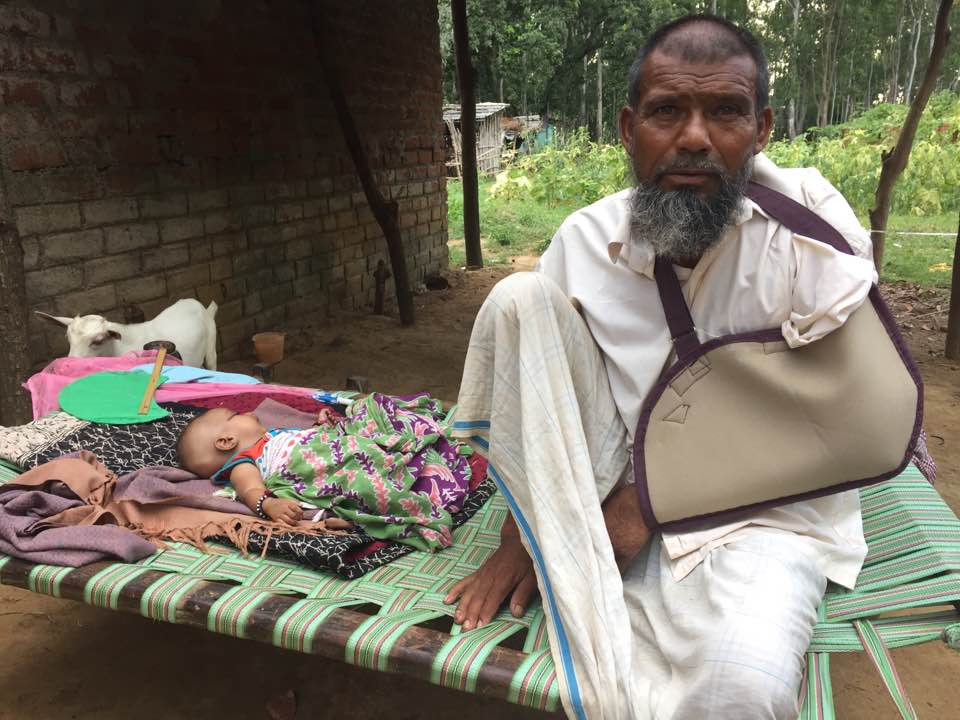Don’t bother, India. That noise was just someone getting lynched in the neighbourhood
Take a close look at the photograph. I know it is disturbing, but you should be disturbed. It is not a photograph you will see on the front pages of newspapers and on your television screens, not because it is disturbing but because it does not matter very much in modern India if two young Muslim men are lynched for no other reason than the fact that they were transporting cows.


Take a close look at the photograph. I know it is disturbing, but you should be disturbed. It is not a photograph you will see on the front pages of newspapers and on your television screens, not because it is disturbing but because it does not matter very much in modern India if two young Muslim men are lynched for no other reason than the fact that they were transporting cows.
The skinny teenagers were Anwar Hussein and Nazrul Sheikh, and once the life was beaten out of them on Aug. 27, the police deposited their bodies at a rural hospital in the town of Dhupgiri in North Bengal’s Jalpaiguri district. They were both 19 years old. Hussein was Assamese and Sheikh Bengali. They had bought seven cattle and were stopped by villagers supposedly agitated by recent incidents of cattle-rustling when they lost their way. The mob demanded Rs50,000 for safe passage, and when the teens said they did not have so much money, they were beaten to death, The Hindu reported.
It is easy to be disturbed in India these days, particularly if you notice how readily Indians will beat, maim, and kill in the name of the gentle cow and Hinduism, a religion once known for its liberal, accommodating philosophy. You may not have heard of Hussein and Sheikh, but it is likely you have heard of Gauri Lankesh, the crusading anti-Hindutva journalist who was shot dead in Bengaluru on Tuesday (Sept. 05). We do not know who killed Lankesh, whom I had known for 25 years, but while many believe the murderers came from the growing ranks of India’s intolerant people, that is not yet clear. The death of crusaders like Lankesh is particularly unsettling because it is so close to home, and the national attention her murder received is no less than it should be, whatever the reason.
But away from that national spotlight, India is clearly sliding into not just intolerance but murderous intolerance and fading memory, made worse because each dawn—instead of bringing hope—normalises the hate that lies beneath. That is why the killing of Hussein and Sheikh, whose deaths should have become an issue of national debate in a normal democracy, registered as no more than numbers on a database that we maintain at IndiaSpend.org. It records bovine-related violence, and, as the table below reveals, there has been an exponential rise in such hate crimes.
There were three incidents in 2014, the year Narendra Modi and the Bharatiya Janata Party won India. Nine months into 2017, such hate crimes have risen more than 10-fold. The police do not register such crimes as stemming from hate because India does not categorise them as such, so there is no official record available.
The coming of the night
As with the deaths of Hussein and Sheikh, there are many incidents that have faded into the night of dying memory. Any society that lives with such a growing tide of hate crime is vulnerable to outrage and revulsion fatigue. That fatigue has settled deeply on India. You may recognise some names on the database, such as Mohammed Akhlaq, Pehlu Khan, and Junaid Khan, because they briefly came to national attention. As the number of crimes rises, the attention fades.
So, Hussein and Sheikh are statistics, regarded with as little interest as we might a road accident. This is why it is important we remember, as the former bureaucrat Harsh Mander wants us to with his caravan of love, Karwan-e-Mohabbat, now winding its way across the scenes of hate crimes and homes of victims—almost all Muslim and some Dalit—that India would rather forget. Mander and his small band of wanderers recall in detail the brutality of some crimes, as they did last week in describing how two young Muslims were not just murdered but mutilated while being put to death in Nagaon, Assam, on April 30.
“We had a heart-rending meeting with the families of two cousins, Riyaz and Abu Hanif, who were lynched in Nagaon,” wrote Mander in his first dispatch from their travels. “They were both teenagers fishing in a nearby non-Muslim village, where on the rumour that they were cow thieves, they were lynched to death by a mob, who also badly mutilated their bodies. Their parents are still inconsolable that their eldest sons were killed by their neighbours, and with such cruelty.”
His subsequent dispatches from other lynching sites reveal disquietingly similar patterns of what he calls “communal rationalisations” by villagers and former friends, often known to the victims all their lives. In Giridh, Jharkhand, he tells us of Usman Ansari, an old man who still lives in fear and hiding, the bones in his hand still crushed, the scalp still bearing wounds of the day his neighbours beat him into unconsciousness, took him for dead, and set his home on fire on June 28. He is alive only because a young district collector, accompanied by the police, stopped the mob from setting him on fire. Ansari was unconscious for eight days and stayed in hospital for months.

At a village meeting, Mander and his travelling companions faced the same hostility they did in Dadri, Uttar Pradesh, at the former home of Mohammed Akhlaq. “Our arguments appealing to justice, and to even elementary humanity, only led to anger and hostility… no compassion, no contrition of any kind,” wrote Mander on day three.
There was some contrition evident from older residents at their next stop in Ramgarh, Jharkhand, where coal trader Amiluddin Ansari was done to death on a busy street on June 27, the lynch mob laughing as the bloodied man pleaded for mercy as the life was beaten out of him, “as though this was a sport, a reality television show, or a video game.” Mander recalls how town elders agreed they should not have remained silent after Ansari’s murder.
As neighbour turns on neighbour, lynch mobs get pleasure from their cowardly, vicious work, and the majority of Hindus stays silent, it is evident that India would rather overlook—or ignore—the things it should never forget.
This post first appeared on Scroll.in. We welcome your comments at [email protected].